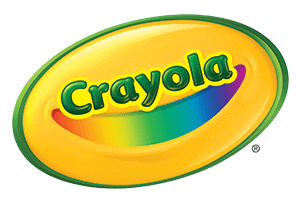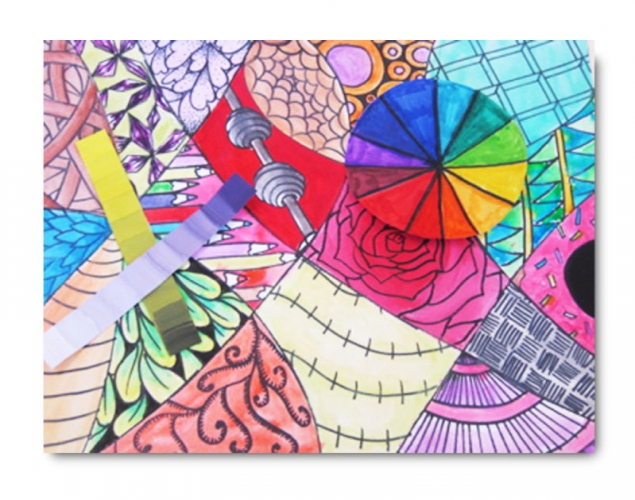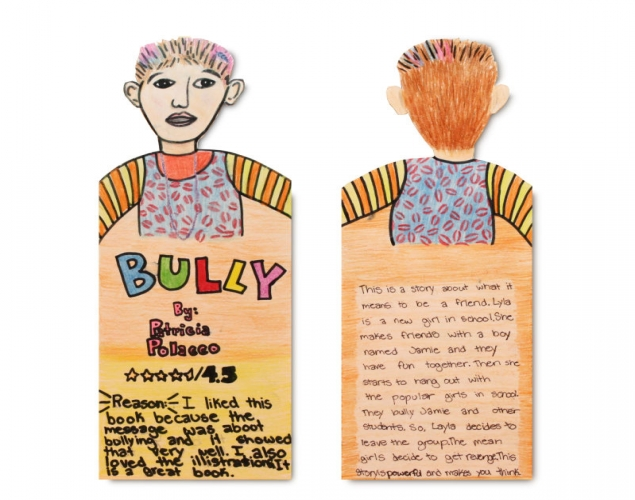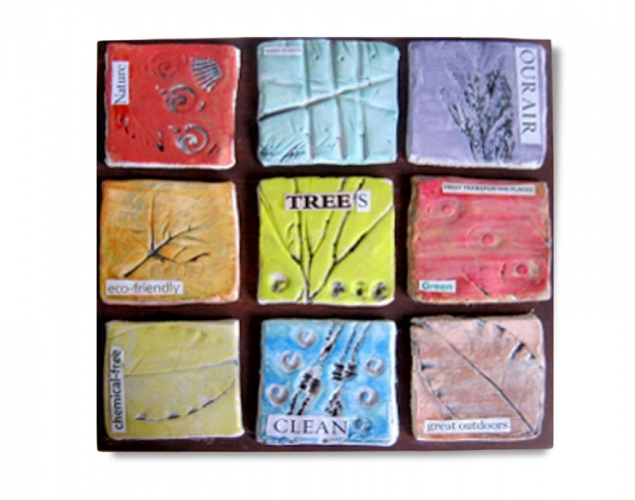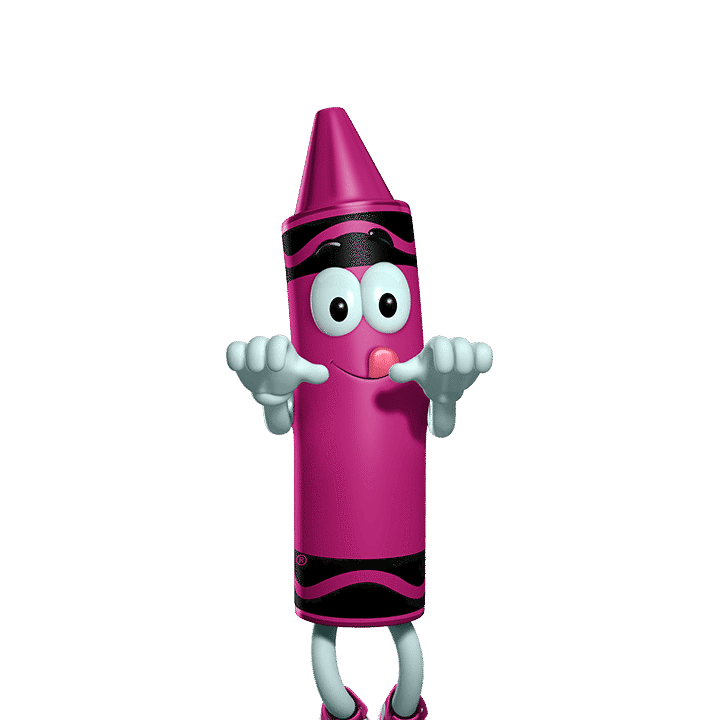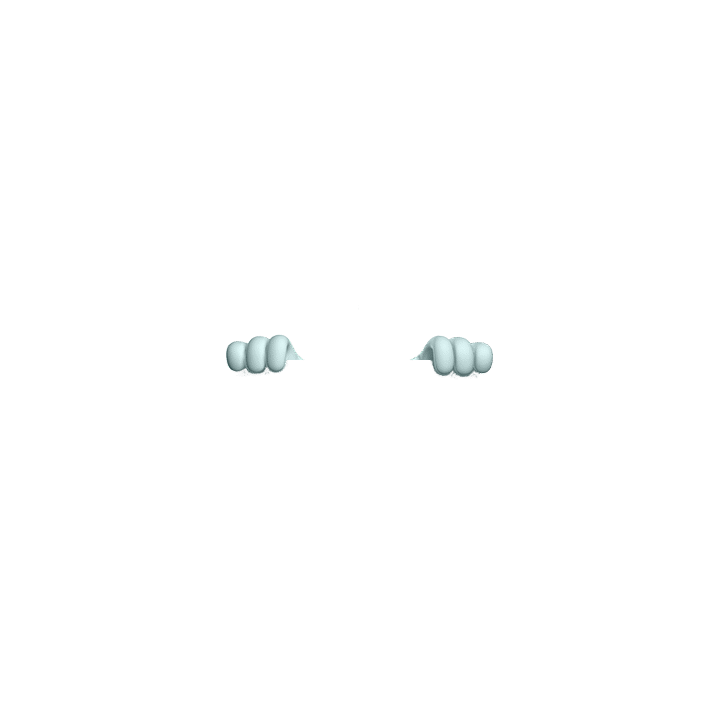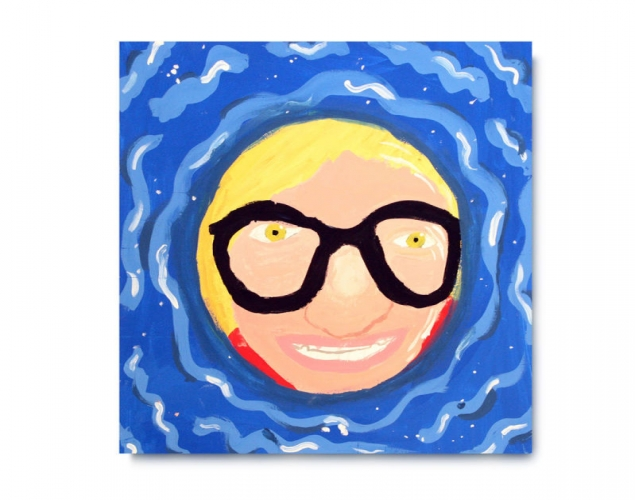
Supplies:
- Crayola Marker & Watercolour Paper - 22.9 cm x 30.5 cm (9" x 12")
- Crayola Paint Brushes
- Crayola Tempera Paint
- Crayola Permanent Markers - Black
- Water Containers
- Paper Towels
- Pencils
- Erasers
Steps:
1
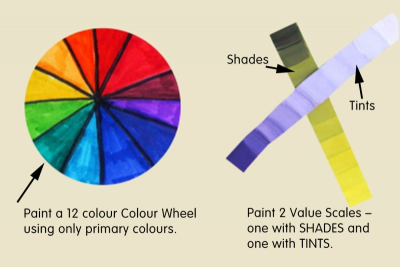
- Paint a 12 colour Colour Wheel using only primary colours.
- Paint 2 Value Scales.
- one with shades of a colour (the colour plus black)
- one with tints of a colour (the colour plus white) - When mixing TINTS:
- always begin with white and add very small amounts of the colour to it
- make sure there are distinct steps from one tint to the next - When mixing SHADES:
- always start with the colour and add very small amounts of black to it
- make sure there are distinct steps from one shade to the next
2
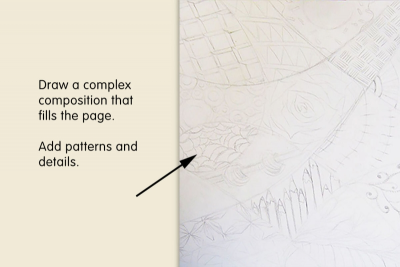
- Draw a complex composition that fills your paper, for example,
- divide the space into separate sections
- add patterns and details in each section
3
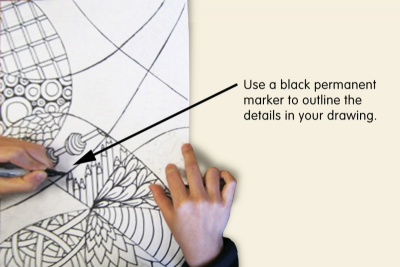
- Use a black permanent marker to outline the details in your drawing.
4
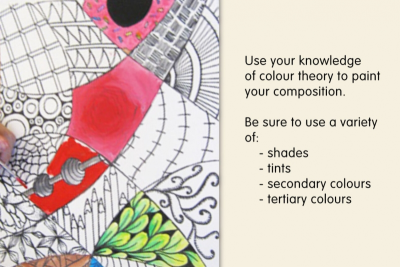
- Use your knowledge of colour mixing to paint your composition.
- Be sure to use a variety of:
- shades;
- tints;
- seconday colours;
- tertiary colours.
5
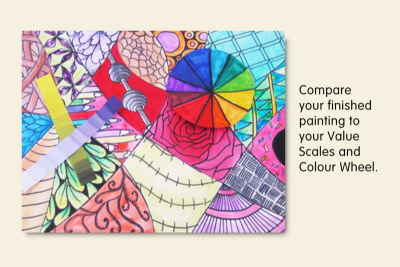
- Compare your finished painting to your Value Scales and Colour Wheel.
Subjects:
Grades:
Grade 7,
Grade 8,
Grade 9,
Grade 10
